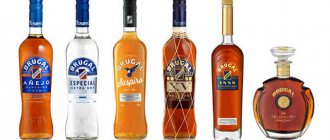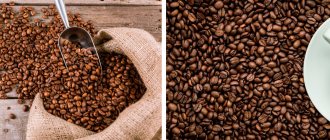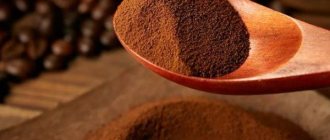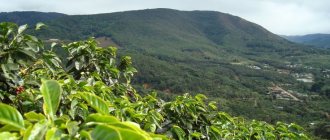Real Mexican coffee can be compared to light white wine. It is equally delicate, slightly sour, with a dry aftertaste. Elite varieties are even more refined. They feel the strength and complexity of the bouquet. To prepare such a drink, you need to strictly follow the technology used in this country and understand in advance the entire range of coffee products in Mexico. Only in this case will it be possible to make the right choice and get the desired result.
Brief history of origin
Spanish colonists brought the first coffee trees to the state in the 18th century. They began to be planted in the state of Veracruz. True, initially the seedlings did not take root well. Farmers had to put in a lot of work to develop this crop throughout the country.
Towards the end of the 19th century, the redistribution of territories began in the state. Europeans began to buy up huge areas. They decided to develop the coffee industry. Thanks to this, coffee from Mexico began to be supplied to the world market. The country is among the top ten exporters of this product.
The formation of the country's coffee industry
Coffee trees were brought to Mexico from Cuba, the Dominican Republic and the Antilles in the 18th century by Spanish colonists. For the development of this culture, the state with the longest territory was chosen - Veracruz, which is located on the Gulf Coast.
At first, farmers had little hope of ever reaping a normal harvest, but after hard work and ingenuity, the seedlings took root.
The cultivation of this plant was not perceived by landowners as something promising. This country has very rich natural resources of gold, so the income from the sale of grains was insignificant in comparison with the sale of precious metals.
After the establishment of the official border with Guatemala at the end of the 19th century and the revolution at the beginning of the 20th century, a large-scale redistribution of land occurred in Mexico. Hundreds of hectares were bought by European entrepreneurs who invested a completely different meaning in the coffee harvest. After a series of transformations, the production of aromatic grains was brought to an industrial scale.
Over time, more and more undeveloped Mexican land was cultivated to grow coffee beans.
Only the Arabian variety has taken root there properly, from which over 300,000 tons of first-class Arabica beans are harvested throughout the country every year.
At the moment, Mexican coffee has filled more than half of the US market, even surpassing the Brazilian product. However, most of the harvest remains in the country due to the great love of energetic Mexicans for this drink, the other part is exported to America, and only a small share of the harvest ends up on our continent.
Production Features
The state's climate is ideal for growing coffee trees. Temperature differences here are relatively small, and the rainy seasons are short. Accordingly, there is a moderate amount of precipitation.
In total, at least 400 hectares of land are occupied by plantations in Mexico. The annual harvest reaches 300 thousand tons. As a rule, only medium and small entrepreneurs are involved in coffee production. There are few large enterprises in the coffee industry.
An area at an altitude of 400 to 900 meters was selected for growing trees. The Arabica that grows on them is called lowland. As a rule, plantations are located on volcanic soil. The taste of the resulting product is influenced by the region of origin.
The grains are processed using the wet method - the fruits are cleared of pulp using water.
Additional questions and answers
About 1.6 billion cups of the invigorating drink are consumed around the world every day. Therefore, it is useful to know a few interesting facts about coffee.
How new varieties of coffee appear
To obtain new coffee trees, two methods are used - cuttings and planting seeds. In the first case, you can cross 2 species to get a hybrid. Cuttings take root quickly, so they can bear fruit in the first season after planting. The seeds take 6 weeks to germinate. With the second method, you need to wait about 5-6 years to get the first harvest.
New varieties of coffee appear through planting seeds.
How many types of coffee are there?
From 2 to 3 thousand varieties are cultivated in the world. Most of them are located in Ethiopia, where some of the trees grow in the wild. Only about 12 varieties are grown in other regions.
What is the most popular type of coffee
The most common is Bourbon Santos from Brazil. Residents of North and South America and Scandinavia drink weak Americano or mochaccino. Muslims make black coffee with spices. Asians love coffee cocktails with ice cream and fruit. The Greeks prefer frappe, the Italians prefer Romano. Western Europe loves espresso.
Bourbon Santos is the most common coffee variety.
What type of coffee is the strongest?
Robusta has a higher strength because it contains a lot of caffeine. The mixture called Death Wish Coffee consists of beans brought from Indonesia and Vietnam. The alkaloid content is 1.5-2 times higher than normal.
What is the most expensive type of coffee
Black Ivory (Thailand) is considered the most expensive. The entire small harvest is exported, so for 1 kg they ask for $1000. A cup of drink costs at least $50. A special feature of the production is the fermentation of grains in the stomach of elephants.
What type of coffee is the most delicious?
The choice depends on individual preferences. Most people love Colombia Supremo for its softness and interesting taste. Connoisseurs of strong coffee will love Dalat. For exotic lovers, spicy Puerto Rico with a fruity aftertaste will suit you.
The best varieties
Only Arabica beans are grown in this state. The best varieties include Maragodzhip, Elephant Breeze and Tapachula. In addition, several unique local varieties should be highlighted:
- Altura is a high-quality variety that grows in highlands;
- Altura Huatusco - grown in the state of Oaxaca;
- High Coatepeque - grows in mountainous areas, near the city of Coatepeque;
- Pluma Coatepeque - grown in Oacaja, is considered one of the highest quality varieties.
Coffee growing regions
Veracruz. It mainly supplies coffee from lowland plantations, but a small part of the production is Altura Coatepec coffee, which is grown on the mountain slopes near the town of the same name. Altura Coatepec has a reputation for refinement and impeccability. Other highland coffees from this state are Altura Orizaba and Altura Huatusco.
Oaxaca. Local plantations are located mostly on the southern slopes of the mountains; the products of this state can be recognized by the label Oaxaca or Oaxaca Pluma.
Chiapas. Coffee from mountain plantations is famous; the popular Tapachula variety is produced here.
Mexican coffee recipes
In Mexico, coffee drinks are prepared using a special technology. There is far more than one recipe that makes it possible to fully reveal the taste qualities of grains and complement them with new shades.
Classic recipe
To prepare two servings of Mexican coffee you will need the following ingredients:
- 200 ml water;
- 20 g crushed grains;
- 10 g chocolate;
- 10 g granulated cane sugar;
- a pinch of cinnamon and nutmeg;
- 20 ml whipped cream.
To get a flavorful drink you need to do the following:
- Pour the crushed grains into the Turk and add water.
- Place the container on the stove and wait for the foam to rise.
- Set the cezve aside and after the foam settles, repeat the same manipulations.
- In one container, mix cinnamon, granulated sugar and nutmeg.
- Melt the chocolate and pour into cups.
- Then pour coffee into the bowl and stir.
- Top with a mixture of cinnamon, nutmeg and granulated sugar.
- Garnish the resulting drink with whipped cream.
Invigorating Mexican coffee
During the cooking process you will need the following products:
- a teaspoon of ground beans and cocoa;
- 100 ml water;
- 20 ml condensed milk;
- 2 pieces of refined sugar.
Just a few steps are performed:
- Pour cocoa and coffee powder into the cezve.
- Add water and brew coffee.
- Pour the resulting drink into a cup.
- Add condensed milk and stir.
- Serve refined sugar separately on a plate.
Coffee drink with tequila
This recipe is especially popular among Mexicans. Thanks to its use, it is possible to obtain slightly tart, aromatic coffee with a bright taste. In this case you will need:
- 15 g ground beans;
- 150 ml water;
- 15 ml tequila;
- 30 ml liqueur;
- cinnamon stick.
There are several stages of preparation:
- Brew coffee beans using any convenient method.
- In a separate bowl, mix tequila and liqueur.
- Add the resulting mixture to a hot drink.
- Garnish with a cinnamon stick.
Mexican coffee traditions
Residents of the country adore coffee, eagerly starting their day with it, sipping it in the midst of their afternoon rest and ending the day's chores with the same constant cup of coffee.
For domestic use, Mexicans reserve far from the most elite varieties. A special roasting method helps brighten up the taste defects of the finished drink. At the final stage of the process, sugar is mixed into the grains. It melts and the resulting caramel envelops the coffee. The drink is strong, sweetish, with bright caramel and nutty notes.
Mexicans are more likely to drink cold or chilled coffee. Hot, freshly brewed ones are consumed less often. This is again due to the quality of the raw materials for the drink. Husks and broken grains are often added to it, and this mixture should be thoroughly infused.
As for recipe features, Mexicans love sweet coffee with cinnamon, often adding tequila to the finished drink in the absence of rum.
Outdated concepts are often associated with Mexican coffee. Modern Mexico supplies quite decent grains of normal, even quality. It’s worth trying coffee from this Central American country, if only out of curiosity. To start, try Tres Oros, which is well worthy of becoming a morning drink. If you like it, you can continue experimenting, discovering new flavor facets of Mexican coffee.
Why is Maragogyp a rare variety?
Maragogipe coffee is considered rare due to the fact that farmers are not particularly keen to grow it. Trees not only have large leaves, but also very long branch internodes. Since clusters of berries appear precisely from the internodes, Maragojipa trees bear fruit worse than other varieties.
In the most productive years, the total weight of grains collected per year from one Maragojipa tree is 20% less than the weight of the annual harvest of Castillo Arabica. But a huge tree requires twice as much space as Typica or Bourbon.
To remove the peel and pulp from coffee beans, special machines are used, which are usually configured to process fine Arabica beans. To ensure that the knives do not damage the larger grains of Maragojipe, the equipment has to be reconfigured. Otherwise, the cut grains will have to be sold at bargain prices.
Some lovers, on the contrary, believe that the taste of “Elephant grains” is soft, velvety, with hints of chocolate and fruit. In Guatemala and Colombia, it happens that farmers who grow high-yielding Arabica Castillo for sale plant several Maragojipa trees for their own needs.
Costa Rican coffee classes
- SHB or Grown Mountain is the best product category;
- GHB – fairly good quality;
- HB or Hard Bean Medium (MHB) has good quality indicators based on the height of the growing plantations (900-1200m);
- LGA – labeling of Costa Rica lowland coffee.
The product class directly affects the formation of its cost. The average price of roasted grain (per 1 kg) is 1800 rubles.
Arabica from the Tarrazu region is considered the best in the world. The following varieties are known:
- Marcos;
- Sarchi;
- La Minita Tarrazu is hand-sorted;
- Britt is sorted and cleaned by hand and has a low caffeine content.
How to choose quality coffee
High-quality instant coffee can taste virtually no different from grain coffee, especially when properly prepared.
However, there are several characteristics that you should pay attention to in order to purchase good freeze-dried coffee:
There are three types of instant coffee: consisting only of Arabica, a mixture of Arabica and Robusta, or Robusta beans. The first option is the most expensive, and the last is the cheapest. However, the quality of the product depends not only on what percentage of the grains were used, but also where they were collected. For those who love strong, aromatic coffee, the best option is a drink with 100% Arabica or a robusta mixture, but strongly roasted; emulsified, powdered coffee costs less than granulated coffee. For coffee gourmets, granulated coffee without dust and powder in packaging is suitable. Granulated coffee is made by soaking beans in a special solution. High-quality granules must have a porous surface; the percentage of caffeine content is not always indicated on the packaging - this is due to the fact that such a requirement was not presented to the manufacturer at the legislative level. However, for the drink to be truly tasty, a caffeine content of at least 4 percent is recommended; packaging is of utmost importance. A glass jar is the most popular option, but soft zip-lock bags are also used. According to the rules, a high quality product is always packaged in glass jars
When choosing coffee, you should pay attention to the condition of the can - there should be no visible chips or cracks on it. Paying attention to several characteristics: type of packaging, type of grinding of beans, percentage of caffeine, you can choose a high-quality, natural drink
In addition, you should pay attention to the price - it is not necessary to choose the most expensive coffee, but the price - 100 rubles per glass jar should alert the buyer
By paying attention to several characteristics: type of packaging, type of grinding of beans, percentage of caffeine, you can choose a high-quality, natural drink. In addition, you should pay attention to the price - it is not necessary to choose the most expensive coffee, but the price - 100 rubles per glass jar should alert the buyer
| Place | Photo | Name/Model | Characteristics and features | average rating |
| 14 | Lavazza Qualita Oro | Italian coffee with a soft, floral taste | 3.6/5.0 | |
| 13 | Absolut Drive blend No. 120 | Soft, unsaturated taste. Suitable for those who don't like bitter coffee | 3.8/5.0 | |
| 12 | Fresco doppio | Assembled in Brazil. 100% Arabica | 3.9/5.0 | |
| 11 | Nescafe Classic | Granulated coffee with added Arabica | 4.0/5.0 | |
| 10 | LOR Original | Made in France. Easy to brew with hot water and tastes good | 4.1/5.0 | |
| 9 | Nescafe Classic Crema | Creamy texture, excellent taste and aroma | 4.2/5.0 | |
| 8 | Carte Noire Original | Assembled in Colombia. Suitable for true coffee lovers | 4.3/5.0 | |
| 7 | Arabica, Moscow coffee shop on shares | Granulated, high-quality coffee | 4.4/5.0 | |
| 6 | Gevalia Original | Fragrant, instant coffee in soft packaging | 4.5/5.0 | |
| 5 | Egoiste Special | Drink in a glass jar, high quality | 4.6/5.0 | |
| 4 | Bushido Original | Delicious premium instant coffee | 4.7/5.0 | |
| 3 | Jacobs Monarch | Large packaging, favorable price | 4.8/5.0 | |
| 2 | Egoiste X/O Extra Original | Grade No. 1. An invigorating drink for true coffee connoisseurs | 4.9/5.0 | |
| 1 | Davidoff Fine Aroma | A drink with a rich taste and bright aroma | 5.0/5.0 |
Leather goods from Mexico
It is believed that the highest quality leather products are produced in Leon, Guanajuato State. León is a center for the production of excellent quality leather goods not only in Mexico, but throughout Latin America. If you are not planning to travel by train to Guanajuato, then do not worry. Everywhere in the markets of Mexico you can see sandals, boots, belts, jackets, bags, wallets and other products made from genuine leather of excellent quality, all locally produced. Such a souvenir is not only beautiful and convenient, but also very practical, as it is guaranteed to last you for many years.
Souvenirs made from genuine leather are not only beautiful, but also very practical.
Recommendations
| Wikimedia Commons has media related to Coffee in Mexico . |
- "Food and Agricultural Production". Food and Agriculture Organization. Retrieved November 27, 2011.
- ^ a b
Mexico: other cultures - ^ a b
"Main coffee producers". National Geographic Society. Retrieved 2010-05-07. - ^ a b c d f f gram hour
Renard, Marie-Christine (May 11, 2010).
"Mexican Coffee Crisis". Latin American Perspectives
.
37
(2): 21–33. Doi:10.1177/0094582X09356956. - ^ a b c d f f gram h i j k l m p
Nestel, David (November 1995).
"Coffee in Mexico: international market, agricultural landscape and ecology." Ecological Economics
.
15
(2): 165–178. Doi:10.1016/0921-8009(95)00041-0. - Mendez, V. Ernesto; Bacon, Christopher M.; Olson, Meryl; Petchers, Seth; Herrador, Doribel; Carranza, Cecilia; Trujillo, Laura; Guadarrama-Zugasti, Carlos; Cordon, Antonio; Mendoza, Angel (4 June 2010). "The Impact of Fair Trade and Organic Certification on Small Household Coffee Growers in Central America and Mexico." Renewable Agriculture and Food Systems
.
25
(3): 236–251. Doi:10.1017/S1742170510000268.
The most popular varieties in the world
Australian
The most popular is Arabica Australia Skyberry. This variety appeared in the world relatively recently, but has already won the love of gourmets all over the world, because its qualities are in many ways reminiscent of the favorite, expensive drink of the British royal family - Jamaican Blue Mountain. Taste characteristics – soft taste with a tart note.
Asiatic
- Arabica Yemen Mocha Mattari. For many centuries, the real wealth of Yemen was considered to be spices, incense and a special type of coffee - mattari mocha. The name of the product comes from the area where the plants are grown. It was this variety that first appeared on the territory of Russia and European monarchs drank it with pleasure, for which the drink began to be called “coffee of the lords.” Mocha has unique taste qualities - it can be easily recognized by its light sourness and pleasant chocolate aftertaste. This is one of the most popular single-origin coffees.
- Robusta India Cherry. This variety of Robusta has an incredibly rich aroma and a rather bitter taste with a slight sourness. It is not used as a single variety, but is often added to coffee blends.
Note: the following varieties are very popular - Arabica India Monsund Malabar, the most expensive coffee is recognized as Arabica Indonesia Kopi Luwak, another variation of the famous Blue Mountain - Arabica Papua New Guinea RV.
Arabica South America
- Brazil Santos (Arabica Brazil Santos). The drink has a rich, rather strong taste with a slight sourness and a hint of spice. If you don’t like exotic coffee, but prefer classic coffee, choose this variety.
- Colombia Supremo. The name means magnificent. The drink fully justifies its title - delicate, velvety taste, slightly sweet with a slight wine sourness.
Central America
- Arabica Guatemala Maragogype. It has a spicy taste and a slightly smoky aroma. The drink is valued for its richness and rich flavor bouquet with floral and fruity notes.
- Arabica Guatemala Antigua. It is distinguished by characteristic bitterness and notes of prunes, the aftertaste is light, citrusy with spicy chocolate notes. This variety is chosen by gourmets from different continents.
African
The most popular Arabica varieties are:
- Burundi AA (Arabica Burundi AA);
- Kenya (Arabica Kenya);
- Ethiopia Sidamo (Arabica Ethiopia Sidamo).
Considering that coffee is grown on many continents, we can say with confidence that there are as many varieties of this magnificent drink as there are tastes.
We recommend reading about the cultivation and varieties of Indian coffee, as well as in more detail about the differences between Arabica and Robusta.
photo: depositphotos.com/mazzzur, valentinar, anna421, seksan44
Instituto Mexicano del Cafe (INMECAFE)
The Mexican Coffee Institute (Instituto Mexicano del Cafe), INMECAFE, was a government-regulated agency responsible for providing technical assistance, administering Mexican coffee export quotas, and maintaining high and stable coffee prices in the market.[5] Thanks to INMECAFE's efforts to integrate new lands into coffee cultivation,[5] coffee productivity increased rapidly. As a result, the three main states of Chiapas, Veracruz and Oaxaca contributed 73% of the total agricultural land area for coffee production.[5]
Between 1970 and 1982, Mexican agricultural land devoted to coffee production increased by 141,203 hectares, and national coffee production increased by approximately 6,000 tons of green coffee per year.[5] In addition, INMECAFE encourages the use of agrochemical technology and the organization has provided farmers with technical assistance to improve productivity.[4][5] Accordingly, 50% of coffee growers in Chiapas, 22% in Veracruz and 22% in Oaxaca have received technical assistance from INMECAFE.[5] INMECAFE's technical assistance covered approximately 28% of Mexico's coffee-producing regions in 1982.[5]
In 1989, INMECAFE disbanded after President Carlos Salinas de Gortari announced that the Mexican government would relinquish control of its coffee market while they responded to construction adjustments by the World Bank and other international financial institutions.[4]This policy change left farmers behind. without protection from highly volatile international coffee prices and had devastating consequences, especially for small producers.











